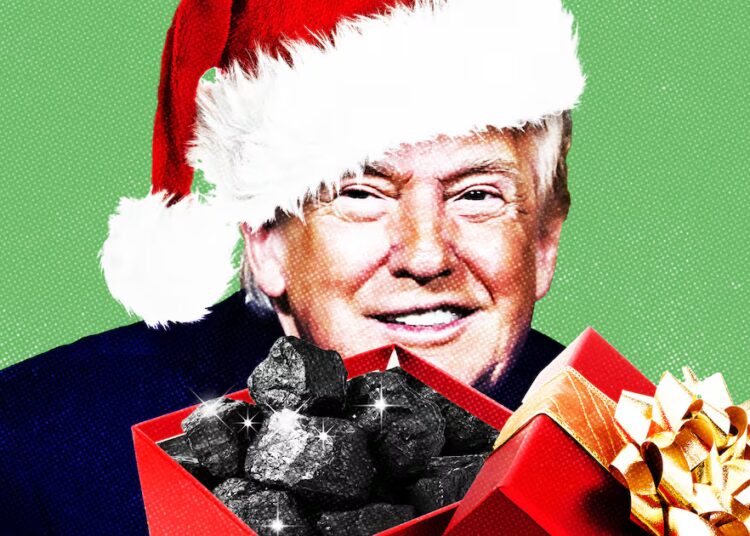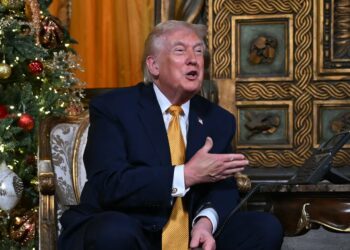In March 1976, a young Senate staffer named James Johnston who was investigating the assassination of President John F. Kennedy was summoned to CIA headquarters to meet an unidentified agency representative. The man showed him an explosive document whose existence has never been revealed publicly — until now.
The document said that “the Mexican government had investigated Kennedy’s assassination and concluded Cuba was responsible,” recalls Johnston, a lawyer and writer who has closely followed the assassination ever since. According to a vetting slip he saw that day, Johnston told me, this file had only been read by five other people, one of whom was Richard Helms, who headed the CIA from 1966 to 1973.
The CIA representative who shared the document, Johnston later learned, was Thomas Karamessines, the head of the agency’s clandestine service. Even now, Johnston won’t reveal how the CIA obtained its information, except to say that the source was “sensitive and credible.” Johnston believes the CIA had showed him the document so it couldn’t be accused of hiding it from Senate investigators. The secret Mexican assessment was compelling because about two months before Kennedy’s death, Lee Harvey Oswald had visited the Cuban embassy in Mexico City seeking a visa. He went to the Soviet embassy there, too, where he also requested a visa and met with a KGB operative.
Johnston doesn’t have a copy of the document, and this report is based on his sole account and recollection. The CIA claimed it sent all Kennedy assassination documents to the National Archives in 1998, and they’ve been declassified and released in tranches since. With President Donald Trump’s order to release all remaining classified documents about the assassination, the Mexican report should have been included. But Johnston said he’s seen no evidence that the document he saw in 1976 has ever emerged. “I’m not aware that the CIA has released any such document,” Jefferson Morley, a leading expert on the assassination and the editor of “JFK Files” on Substack, told me.
Johnston told me he doesn’t know if the document’s allegation of Cuban involvement is true or not, but he argued “the real question is why the CIA never released it,” even in the flood of material the agency disclosed this year. Johnston said he has come forward now because Trump ordered all secrets about the assassination be unlocked.
Back in 1976, Johnston immediately described the document to his bosses, Sens. Richard Schweiker (R-Pennsylvania) and Gary Hart (D-Colorado), who were running the Kennedy assassination subcommittee of a groundbreaking investigation of the CIA overseen by Sen. Frank Church (D-Idaho). The Church committee’s final report faulted the CIA and FBI’s assassination investigations and added only that it had found unpursued leads related to Cuba and the assassination.
Johnston decided to share the information with me for a special reason. Back in November 1989, when I was editor of The Post’s Outlook section, I ran a piece he wrote with the headline “Did Cuba Murder JFK?” It summarized Johnston’s continuing personal investigation of a possible Cuban link to the assassination — in particular the evidence he had gathered that on Nov. 22, 1963, at the very moment Kennedy was killed, the CIA was meeting with a high-level Cuban official named Rolando Cubela, code-named “AMLASH,” for the purpose of assassinating Cuban President Fidel Castro.
“There is no direct evidence to prove that the AMLASH operation and the JFK assassination were related,” Johnston wrote in 1989. That remains true today. But the agency suppressed so many secrets — about its attempts to murder Castro, its interest in Oswald, its intelligence about the Mexican government’s belief that Castro ordered the killing — that top CIA officials must have staggered under the burden they were carrying. Perhaps they had guilty consciences, even if the CIA had no role in the murder.
Another possible reason for the CIA’s silence: Johnston believes that President Lyndon B. Johnson feared that even a hint of foreign involvement might trigger a war with Cuba and possibly the Soviet Union.
Here’s why this story haunts me. Immediately after we ran Johnston’s piece in 1989, I received a call from Helms, the former CIA director. I had spoken with him many times since he retired, often about the Middle East, which I had covered as a reporter and continued to follow closely. He had even written an article for me in the Outlook section.
Helms was usually Mr. Cool. But in this call, following our publication of “Did Cuba Murder JFK?,” he was more upset than I’d ever heard him. “How could you publish something like that?” he asked angrily. I didn’t understand at first. The article made no accusations against the CIA, and Johnston, unlike some investigators, didn’t believe the conspiracy theory that the CIA killed Kennedy.
But clearly this was a raw wound for Helms, maybe for a personal reason. He’d read the Mexican report, according to the vetting slip Johnston saw. Had he perhaps wondered for decades if it was true that AMLASH had tipped off Castro about the CIA’s plot — and that the Kennedy assassination had been an act of revenge? Helms died in 2002, so we’ll never know. But when I hung up the phone that day, I knew that he was genuinely troubled that The Post had surfaced these issues.
Readers who want to understand the background better should visit Johnston’s blog about the assassination or read his excellent 2019 book, “Murder, Inc.: The CIA under John F. Kennedy.” He drew his title from a comment LBJ made to a reporter shortly before his death, that Kennedy had been operating “a damned Murder Inc. in the Caribbean.”
After he left office, LBJ became increasingly concerned by the “possibility that Castro had Kennedy killed in retaliation for the CIA plots,” Johnston notes in his book. Back in 1967, LBJ had asked Ramsey Clark, his attorney general, to investigate a possible link, after he was told about it by the well-sourced columnist Drew Pearson. In a March 1967 column, Pearson described “a reported CIA plan in 1963 to assassinate Cuba’s Fidel Castro, which according to some sources, may have resulted in a counterplot by Castro to assassinate President Kennedy.”
Helms, who was CIA director at the time, asked the CIA inspector general to investigate plots against Castro. The IG turned in a 133-page report; Helms ordered that every copy but one be destroyed, writes Johnston. He says the only discussion of the JFK assassination in the document (which the CIA eventually released) was this: “It is very likely that at the very moment President Kennedy was shot a CIA officer was meeting with a Cuban agent in Paris and giving him an assassination device for use against Castro.”
I’m not taken with conspiracy theories, and I continue to believe that the most likely explanation is that Oswald was a lone assassin operating on his own. The Mexican government has never publicly stated its findings, Johnston says. As for Cuba, it denied any role soon after the assassination.
What I take from Johnston’s story is a lesson that’s as relevant today as it was in 1963. When the U.S. government meddles abroad, it must be wary of unintended consequences. So often, there is “blowback,” as the agency delicately puts it.
Johnston quotes from an interview Castro gave to an Associated Press reporter in September 1963, two months before Kennedy’s death, at a time when he seemed aware of the CIA’s attempts to kill him, “United States leaders should be mindful that if they are aiding terrorist plans to eliminate Cuban leaders, they themselves will not be safe.”
Why did the CIA bury its knowledge about the Castro schemes, its activities in Mexico, and a dozen other subjects related to the assassination? Surely, officials wondered if the agency had an unintentional role in one of modern history’s greatest tragedies. But the public record remains incomplete.
The post 50 years ago, he saw a document in the JFK file. Where is it now? appeared first on Washington Post.




